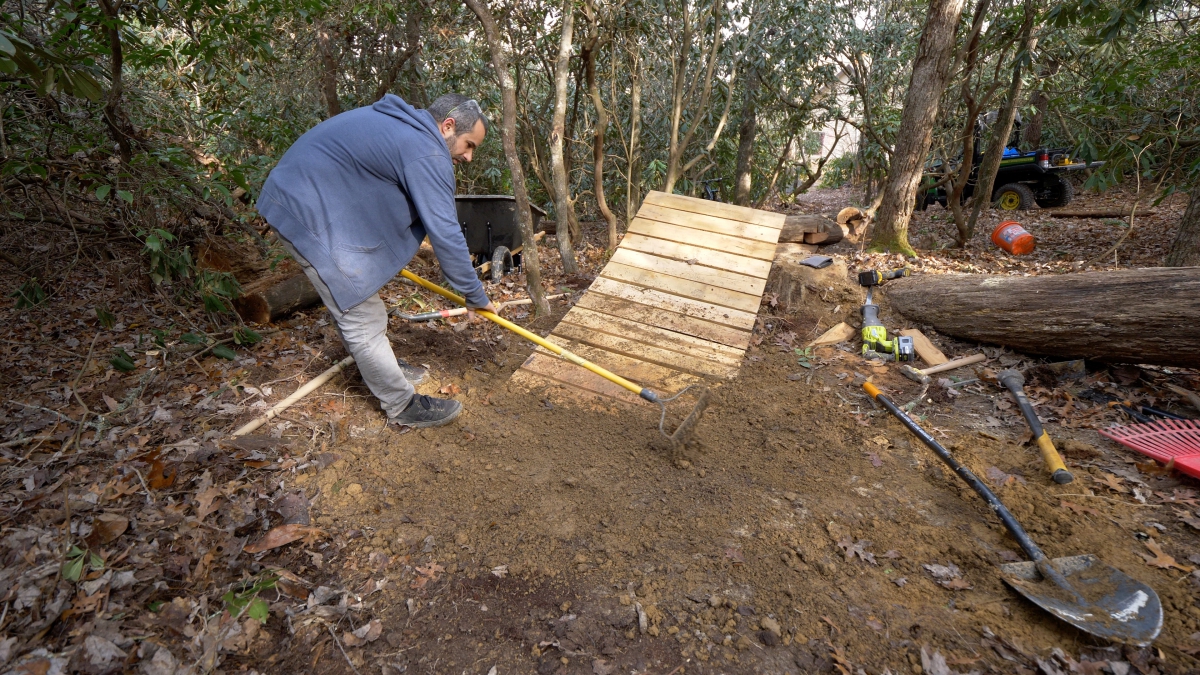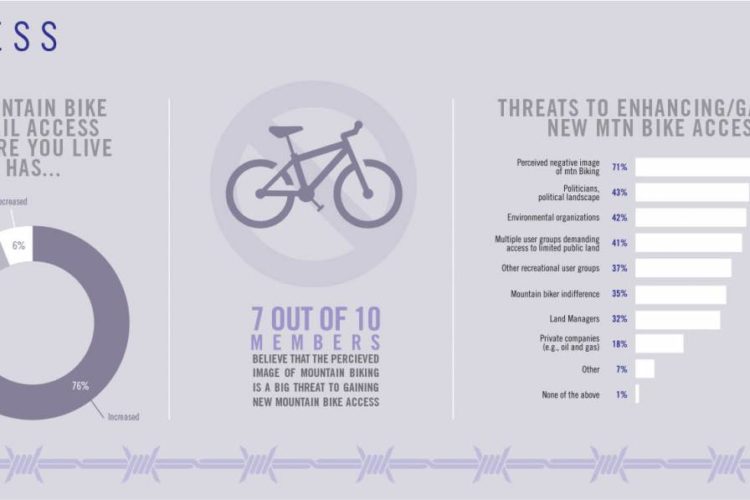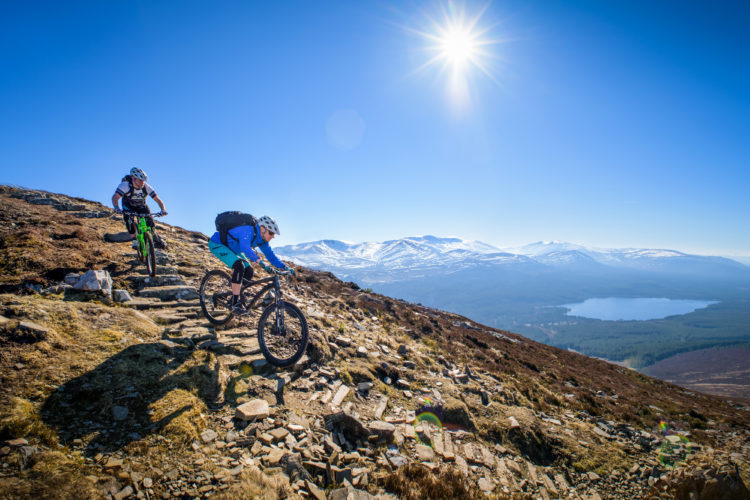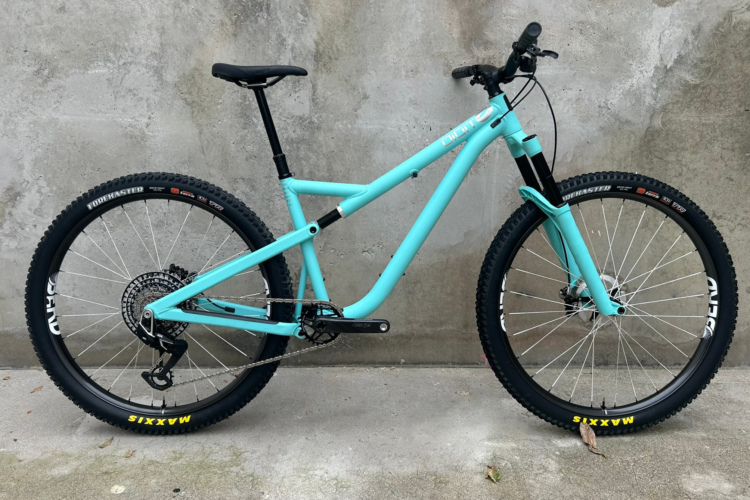


There is no question that YouTube has fundamentally changed the fabric of mountain biking culture. Not only has it enabled mountain bikers around the world to discover and publicize new trails, but a whole new class of celebrities has arisen: the mountain biking personality. Neither racers nor industry-insiders, these average individuals have aided the community tremendously by finding the next big mountain bike hotspots, voicing the opinions of many riders, entertaining us, and finding the compelling stories of normal mountain bikers that remind us why we love riding so much.
While on a trip to the Southeast this summer, I had a chance to talk to Seth Alvo of Seth’s Bike Hacks, one of the most famous mountain biking personalities out there — if not the most famous. In our interview, he gave tremendous insight into what being a YouTube mountain biking personality is like and where he thinks the mountain biking community is heading into the future.

For those who aren’t familiar with your channel, give us an idea of what you do.
I would say that the most accurate description of what I do is I entertain mountain bikers because that’s the main thing that I have in mind. Is this going to be entertaining to a mountain biking audience? I [also] have a lot of subscribers who don’t mountain bike. A lot of them are starting, I see in the comments all the time, “What should I get for my first mountain bike?” So I entertain and inspire mountain bikers.
How long have you been producing Seth’s Bike Hacks?
I started in early 2015, so February 2019 was year four.
Now we’ll play a little game of favorites. What’s your favorite destination and why?

British Columbia. The dirt and the culture. I think there are a lot of places with good terrain, but they don’t have the history, the culture, and the infrastructure that British Columbia does. [Actually,] the Pacific Northwest is probably more accurate because you’re gonna find that stuff from Oregon all the way up through all BC.
What’s your favorite tire?
I’m experimenting with some different tires, but the go to is always Minions.
Now we’re going to drop into the bigger questions. I understand you’ve been posting on YouTube since 2015. Since you started creating, do you feel as if your videos have changed?
It’s changed gradually. If you look at my old videos, they’re the same as my new videos, but they’re shorter and simpler. My videos [have also] definitely grown more polished. But I don’t think they’ve really changed that much to be honest. I’ve experimented a lot, but I’ve found that when I experiment it’s generally not good. So I decided to just stick to the narration [and] the B roll shots. Everything in my video centers around the narration, so that’s where I spend the most time. On the Berm Peak video, I spent two days — two entire work days, late into the night writing that script.
In the past year or two, you have started collaborating with a number of channels like Skills with Phil, the Singletrack Sampler, and BKXC. Do you influence each other, or do you all make niches within the mountain bike YouTube community with your specific styles?

I think that people are always influenced by their friends. When you’re doing something like YouTube, there’s no instruction manual for it. The only people who you can really talk to this stuff about are other YouTubers, so we definitely influence each other in that way. If one of us realizes something or has a good idea, we share it with each other. But I don’t think they influence my channel anymore than any of my other friends would.
Are there any other specific creators you admire or have been inspired by?
Before I ever had my channel, I watched this guy [called] Cinemassacre. He’s got a show called the Angry Video Game Nerd. I’m not even into video games, but the way he narrates and puts together his videos is probably the closest thing to what I do. He relies heavily on scripting in plan shots, so I’m influenced strongly by his format. There’s a lot of other YouTubers I like, but no others that really influenced the channel.
You’ve also moved to Asheville, North Carolina since our last chat. What drove you to make the move and how did it impact your life?
I grew up in New York. I spent a few years in Florida because when something about an area pisses you off, you do an overreaction in the opposite direction. I really didn’t like the cold, so I moved down to Florida. But in the summer you can’t really do much, and the topography is lacking. It doesn’t limit you as much as you think, and the trails there are pretty impressive, but I do like going downhill. I started the channel in Florida, so that got me traveling. When I traveled, I got exposed to a lot of different terrain that I’d never ridden before. I think I started to crave a little more.
Another good thing about living in North Carolina is that it is more centrally located than Florida. If I’m going to collaborate with someone, they can’t really stop in Florida while they’re on their way through. In North Carolina, I can go to Tennessee, Virginia, and even to the Northeast or out west pretty quickly compared to Florida.

How do you think your most recent move to a more rural setting will impact the channel?
It’s going to give me more space to mess around. When I look back at the videos that perform the best, the videos that people have given me the best feedback on, they were always the stuff that I did by myself at my house. I’ve had travel videos that have performed well, but not like the ones that are set in my yard. Also, they’re the ones that I enjoy making the most. So now, I can do anything I want. I can build trails and use indoor space, so it’s definitely not as limiting.
I never intended to stay at Berm Creek forever. It’s too small. I run my business from home and have like 20 bikes, so I take over the house. If I were to have a kid [at Berm Creek], I would no longer have any space and would have to move everything. Here, we have enough space to pretty much stick around indefinitely. So the move is also going to impact the channel because I’ll have a sense of permanence. I won’t have to hold back because I’m not going any place anytime soon.
Last time we talked to you, you said that sponsorship wasn’t the right fit for you. However, now Diamondback and Box Components are huge supporters of the channel. What changed, and why did you pick those specific brands?
When it comes to something like an ad during a video, I still don’t think that that’s the way to go. I don’t have any ethical problems with it, I know a lot of creators to do it, and I encourage them to do it. You don’t want to be only relying on YouTube revenue. But, my videos are stories. It’s not that other people’s videos aren’t stories, but I think people get lost in the story when they’re watching the video. They are listening to each sentence, and that’s why they watch it. Interrupting that with an ad just takes you out of the story.
You also might have to submit your video to your sponsor before you post it. They might ask you to make changes, and then you’ve got to re-edit it again. It’s like you’re sort of beholden to them and that’s fine if that’s your business model. But sometimes I get done with my videos minutes before I post them to Youtube. I just can’t deal with running my video past somebody.
I would much rather get revenue from a company that just lets me do whatever I want. What Box and Diamondback get is brand awareness. You see the bikes [in my videos], I’ll do a bike check video, and I’ll show people what I’m using. They’ve been great partners because they never try to pressure me into doing anything.
So in the end, without those sponsors, I wouldn’t be able to do the traveling I do or be able to buy supplies for videos. I wouldn’t have that freedom.

What is a day in the life of Seth Alvo like? How much of each day is devoted to work, relaxation, and most importantly, Drama?
It really depends. Right now, there’s a lot going on. It’s summer. It’s the season. I get up at five o’clock in the morning, I go to bed late, and I work until I either have to go do something, it’s too dark out, or I’m too tired to work anymore. A lot of people wouldn’t consider it work because I’m building ramps and working on bikes and hiking around the woods getting shots. At the same time, though, I gotta do that thing until it’s done. When things are quieter, I’ll usually have at least one day off per week.
How about the challenges of fame? Do you feel as if it can be hard to have such a large following?
Almost every interaction I have with a follower is really good. But there were people in the last town I lived in that just heard that there was a YouTuber there and they’re curious. I don’t think these people are actual followers. I don’t think they’re passionate mountain bikers, just people in town who heard there’s a YouTuber, looked up my videos, and are really interested in it because of the fame.
But I honestly don’t think that my followers ever caused those problems. They know that privacy is a concern for me, and they respect it. They also make what I do possible, so any challenges that I might have with them I would have to learn to live with.
[Fame] does change my behavior. Sometimes you wake up on the wrong side of the bed. Sometimes you’re frustrated. Sometimes you have personal problems that have nothing to do with work, and somebody wants to take a selfie with you. I may not really be in the mood to, but I have to act happy and be friendly because for them it’s a really big moment. So it definitely changes my behavior, but I wouldn’t say that it’s overall a really big negative. I think it’s just part of the job.
Let’s move to a few more general topic questions. What is your take on the conflicting images of mountain bikers as stewards to the environment and “shredders?” Do you think one is more accurate than the other?
Every mountain biker has a little bit of all that in them. They like going out and exploring, they love stopping and soaking in a really nice view, and most mountain bikers carry around reusable water bottles. I think mountain bikers are more aware of the environment than most people. And yes, we like going off the jumps and having fun shenanigans, but there are a certain subset of mountain bikers who just don’t care. They’re just in it for the jumps and the shredding. But I think they’re few and far between. I don’t think they’re a big enough group to really be worried about because any group of people there’s a million different types of people. There are bad ones and there are good ones. And I think the bad ones make up a small amount. Most of the mountain bikers I run into aren’t out to cause any harm.

It’s interesting in the media, though, because when arguing about something like mountain bike access to wilderness, hikers point to videos of us tearing up trails.
Right. If you run into a hiker in Pisgah Forest, all of us know to be super, super nice. But they don’t use that example. They use the example in the media. And I think that mountain biking might have an image problem in that area because that’s a lot more interesting. But what are you going to do? Freehub Magazine does it best. They focus on the scenery, locations, and stories. If more of the mountain bike media did it like Freehub, that would be a really good thing. Singletracks.com definitely explores everything like that. But [in general] the shredding stuff definitely gets the views.
But even if you look deep into a channel like Sam Pilgrim, they’re not out to hurt anybody. They’re just having fun. And if you look at where they are, they’re in somebody’s backyard or a private bike park. They’re not going out into national forest and tearing stuff up.
And there’s definitely a misunderstanding. For instance, with e-bikes, hikers don’t want to hear about the differences between, pedal assist and a throttle. They just know it’s electric. So it’s definitely how it’s portrayed in the media. It’s not a problem until somebody misunderstands it, and maybe we could do a better job of balancing it.
Also, unlike most sports where you play on a standard field or something, mountain bikers can ride in a variety of different places. Do you think that mountain bikers’ time and energy in cultivating the sport should be focused toward backcountry trails or local parks?
The time should be put into local parks for a few reasons. One reason is people mountain bike for different reasons. A lot of people just want to blow off steam. You get off of work, and you just want to go blow off steam and have fun. If we have a designated space where we can shred, blow off steam, and have fun, I think that’s good. That’s also low-hanging fruit. It’s much easier to build a local mountain bike park than to open up 500 acres of forest.
My last question regards the relationship between mountain bikers, hikers, and equestrians. Development is encroaching on wild places. Do you think it’s possible for hikers, mountain bikers, and equestrians to come together to fight it? In the past we’ve been very divided and that undermines our chances to stop it.
I think we all hike. Like they say, “if you ain’t hiking, you ain’t biking.” When family comes into town, I go hiking, and a lot of hikers that I pass by mountain bike too. We’re all outdoor enthusiasts. There’s a lot of overlap, and we can all work on the same goals. The thing is I can’t think of that many big publications or YouTube channels that bring everybody together. So it can happen, but there has to be a way to tie us all together. I don’t really think we have that right now. We’re loosely tied together.
Thanks to Seth for spending a little bit of time with us and shedding light on his role as a mountain bike YouTuber.



















